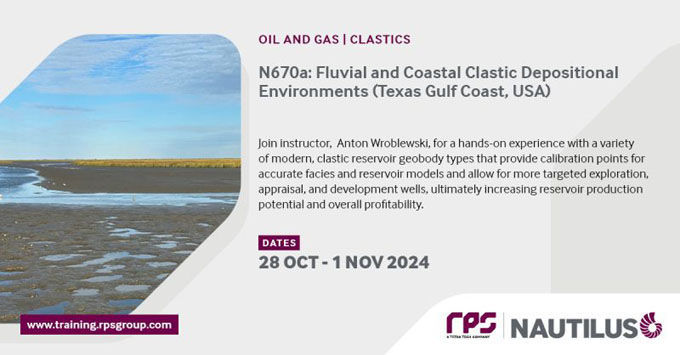
Date: 28 Oct. - 1 Nov. 2024
Start Time: 09:00 CDT
Location: Texas Gulf Coast, USA
Instructor: Anton Wroblewski
RPS Energy has introduced a brand new clastic field course to our 2024 NTA program, taking place from 28 Oct - 01 Nov, and located along the Texas Gulf Coast, US. Instructor, Dr. Anton Wroblewski offers hands-on experience with a variety of modern, clastic reservoir geobody types and provides calibration points for accurate facies and reservoir models.
Business Impact: This course provides hands-on experience with a variety of modern, clastic reservoir geobody types that provide calibration points for accurate facies and reservoir models and allow for more targeted exploration, appraisal, and development wells, ultimately increasing reservoir production potential and overall profitability.
Participants will examine underfilled and overfilled incised valley systems, meandering fluvial point bars, microtidal bayhead deltas, barrier islands, spits, tidal inlets, flood tidal deltas, a wave-dominated delta, tidal flats, creeks, and oyster reefs, and proximal-distal vs. strike-fed coastal reservoir bodies. Many of these deposits and locations are the basis for the most commonly used depositional models of coastal and fluvial geobodies. Participants will learn when these are and are not the best analogs to use and how unique features of each system affect its resulting stratigraphy and sedimentology. Geomorphology, stratigraphy, and sedimentology are linked through the use of trenches, outcrop and core images, and log data to provide insights into three-dimensional subsurface interpretations.
Participants will learn to:
- Identify fluvial, deltaic, tidal inlet, bay margin, and barrier island/shoreface deposits based on grain size profile, sedimentary structures, and ichnofossils.
- Predict reservoir properties of a variety of fluvial and coastal geobodies away from well bore and beyond seismic resolution by using first principle observations and appropriate analogs.
- Recognize and predict the presence of strike-fed and point source sandstone bodies in coastal settings using regional context and physicochemical proxies.
- Construct depositional environment maps constrained and informed by appropriate modern and ancient analogs.
- Recognize that fluvial systems and their associated coastal deposits and incised valleys are primarily driven by sediment supply and climate in the drainage basin and can be decoupled from sea level changes.
KeyFacts Energy Industry Directory: RPS Energy l KeyFacts Energy news: Training
 KEYFACT Energy
KEYFACT Energy